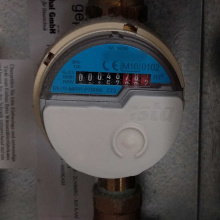Smart Meter Hacking
| Smart Meter Hacking Release status: experimental [box doku] | |
|---|---|

| |
| Description | Trying to read radio signals from smart meters e.g. by using the CC1101 (low cost, low power sub-1GHz RF transceiver) |
| Author(s) | Uli |
| Download | http://www.ti.com/lit/ds/symlink/cc1101.pdf |
Introduction
Goal of the project is to do smart home stuff , especially reading smart meter data without having to buy proprietary, expensive, insecure devices from datahungry, privacy-ingorant and profitmaximizing companies. Therefore alternative hardware and open source "smart home"/"IoT" solutions such as [FHEM] [openHAB] or [Homegear] are preferred. Since Uli already has some smart meters installed in his flat from the energy billing company [Ista] who use the TI CC1101 in their metering devices. Reading the emitted radio signals from these (or similar) devices might be the first step to get a data source and therefore an overview of water, electricity and heating consumption in an open source smart home environment.
Hardware
- smart water meters (Ista istameter product brochure)
- bought an extra cold water meter for tinkering and will bring it to the space when it arrives (ISTA Wasserzähler, Kaltwasser, Istameter)
- heating meter (Ista sensonic II product brochure (german))
- smoke detectors (Ista fumonic 3 product brochure)
- raspberry pi with cc1101 to read 868 Mhz radio signals
- memonic3 radio net device to read, aggregate and upload data form multiple smart meters [[1]]
Approach
- Try to get the CC1101 to send and receive data
- Ideally mount it on an arduino nano which is then called a CUL (cc1101 USB lite) [DIY manual (german)]
- Alternatively use an SDR to record and analyze radio signals from smart meters and try to unterstand them
- Integrate it in a wireless home server such as FHEM
- Display the data on something like grafana
Status
- trying to build my own CUL [as described here]
History
- soldered some wire to the cc1101 to use it with raspberry pi serial connection similar to [this] and made it send test data which could be seen with Paul's SDR in a waterfall chart
Links
[Detailed description of mbus protocol]
